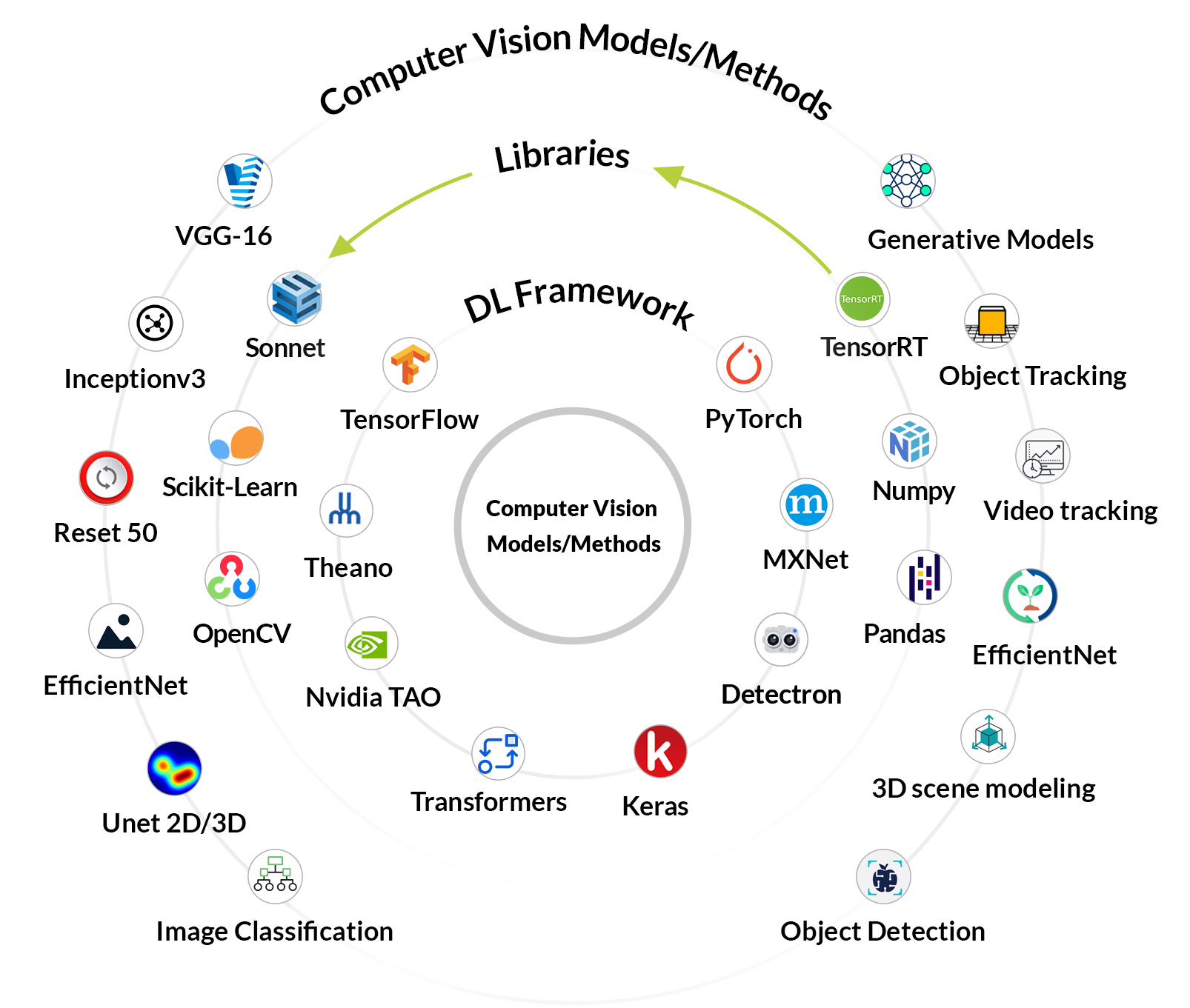Computer vision software development services revolutionize industries with cutting-edge solutions that harness the power of visual data. From enhancing security measures to streamlining manufacturing processes, the impact of this technology is far-reaching and transformative.
Exploring the key components, best practices, and challenges in computer vision software development unveils a world of possibilities and complexities that shape the future of technological innovation.
Overview of computer vision software development services

Computer vision software involves the use of artificial intelligence and machine learning algorithms to enable machines to interpret and understand the visual world. This technology allows computers to analyze and extract information from images or videos in a way that mimics human vision.
Importance of computer vision software development services
Computer vision software development services play a crucial role in various industries, revolutionizing processes and enhancing efficiency. Some key industries benefiting from computer vision software include:
- Automotive: Computer vision software is used for autonomous vehicles, driver assistance systems, and traffic sign recognition.
- Retail: Visual search, object detection, and facial recognition are employed for inventory management, personalized shopping experiences, and security.
- Healthcare: Medical image analysis, disease detection, and surgical assistance are facilitated by computer vision software.
- Agriculture: Crop monitoring, pest detection, and yield prediction rely on computer vision technology.
- Manufacturing: Quality control, defect detection, and robotic automation are improved through computer vision solutions.
Applications of computer vision software
Computer vision software finds diverse applications across different sectors, including:
- Facial recognition for security and access control systems.
- Object detection and tracking in surveillance cameras.
- Gesture recognition for interactive interfaces and virtual reality.
- Visual inspection and defect detection in production lines.
- Medical image analysis for diagnostics and treatment planning.
Key components of computer vision software development
Developing computer vision software requires a combination of key components that work together to enable machines to interpret and analyze visual information. One of the essential components is machine learning algorithms, which play a crucial role in teaching computers how to understand and interpret images.
Additionally, data labeling and annotation are vital for training computer vision models effectively.
Machine Learning Algorithms
Machine learning algorithms are at the core of computer vision software development. These algorithms enable computers to learn from data, identify patterns, and make decisions based on the information they receive. By training these algorithms with large datasets of labeled images, developers can teach machines to recognize objects, faces, gestures, and other visual elements accurately.
Popular machine learning algorithms used in computer vision include Convolutional Neural Networks (CNNs), Support Vector Machines (SVMs), and Random Forests.
Data Labeling and Annotation
Data labeling and annotation involve the process of marking images with relevant tags or metadata to provide information about the objects or elements within the images. This labeled data is used to train machine learning models and improve their accuracy in recognizing and interpreting visual information.
Data labeling and annotation are critical for creating high-quality datasets that can be used to train computer vision models effectively. Without accurate labeling and annotation, the performance of computer vision software may be compromised, leading to incorrect or incomplete results.
Best practices for developing computer vision software

Developing computer vision software requires adherence to best practices to ensure optimal performance and accuracy. Here are some key tips to consider:
Selecting the right development tools
When embarking on a computer vision project, it is crucial to choose the appropriate development tools. Consider factors such as the complexity of the project, compatibility with your existing software and hardware, and the availability of support and documentation. Popular tools like OpenCV, TensorFlow, and PyTorch are widely used in the computer vision community for their robust features and active developer communities.
Optimizing computer vision algorithms
To enhance the accuracy and efficiency of computer vision software, it is essential to optimize the underlying algorithms. This can involve fine-tuning parameters, implementing parallel processing techniques, and leveraging hardware acceleration through GPU computing. By continuously refining and optimizing algorithms, you can improve the overall performance of your computer vision application.
Continuous testing and validation
Testing and validation play a critical role in the development process of computer vision software. Regular testing helps identify and address bugs, performance issues, and edge cases that may affect the reliability of the software. By incorporating automated testing frameworks and validation procedures into your development workflow, you can ensure that your computer vision application meets the desired accuracy and performance benchmarks.
Challenges in computer vision software development: Computer Vision Software Development Services

Developing computer vision software comes with its own set of challenges that developers often encounter. From data quality issues to model performance limitations, there are several obstacles that need to be overcome for successful implementation. Let’s dive into some common challenges and strategies for addressing them.
Data Quality Challenges
One of the primary challenges in computer vision software development is ensuring the quality and quantity of data used for training the models. Poor quality data can lead to biased or inaccurate models, impacting their performance in real-world scenarios. To overcome this challenge, developers can employ data augmentation techniques, collect more diverse datasets, and implement robust data preprocessing pipelines to improve the overall quality of data.
Model Performance Limitations
Another major challenge faced by developers is optimizing the performance of computer vision models. This includes achieving high accuracy, reducing latency, and ensuring efficient model inference. Strategies to overcome performance limitations involve fine-tuning model architectures, hyperparameter tuning, and leveraging hardware acceleration like GPUs for faster computations.
Continuous monitoring and evaluation of model performance are also essential for making iterative improvements.
Scalability Challenges for Large-scale Applications
Scalability is a critical aspect when developing computer vision software for large-scale applications. As the volume of data and complexity of tasks increase, developers need to design scalable architectures that can handle the growing demands efficiently. Solutions for scalability challenges include distributed computing frameworks, cloud-based infrastructure, and parallel processing techniques to enable seamless scaling of computer vision applications.
Outcome Summary
Embracing the realm of computer vision software development services opens doors to endless opportunities for growth and advancement. By staying at the forefront of this evolving field, businesses can unlock new potentials and drive unprecedented success in a digitally-driven world.
Detailed FAQs
How does computer vision software benefit various industries?
Computer vision software enhances efficiency, accuracy, and automation across industries such as healthcare, retail, transportation, and more.
What role do machine learning algorithms play in computer vision software development?
Machine learning algorithms power the intelligence behind computer vision systems, enabling them to recognize patterns, objects, and behaviors.
Why is data labeling and annotation important in training computer vision models?
Data labeling and annotation ensure that computer vision models are trained accurately by providing labeled datasets for learning and recognition.
How can businesses optimize computer vision algorithms for accuracy and efficiency?
Businesses can optimize algorithms by fine-tuning parameters, improving data quality, and implementing robust testing procedures.
What are some common challenges in developing computer vision software?
Common challenges include data quality issues, model performance limitations, and scalability concerns for large-scale applications.
